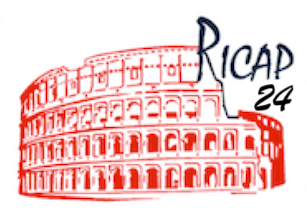Speaker
Description
APEIRON is a framework encompassing the general architecture of a distributed heterogeneous processing platform and the corresponding software stack, from the low level device drivers up to the high level programming model.
The framework is designed to be efficiently used for studying, prototyping and deploying smart trigger and data acquisition (TDAQ) systems for physics experiments.
The general architecture of such a distributed processing platform includes m data sources, corresponding to the detectors or sub-detectors, feeding a sequence of n stream processing layers, making up the whole data path from readout to trigger processor (or storage server).
The processing platform features a modular and scalable low-latency network infrastructure with configurable topology. This network system represents the key element of the architecture, enabling the low-latency recombination of the data streams arriving from the different input channels through the various processing layers.
Developers can define scalable applications using a dataflow programming model (inspired by Kahn Process Networks) that can be efficiently deployed on a multi-FPGAs system: the APEIRON communication IPs allow low-latency communication between processing tasks deployed on FPGAs, even if hosted on different computing nodes.
Thanks to the use of High Level Synthesis tools in the workflow, tasks are described in high level language (C/C++) while communication between tasks is expressed through a lightweight API based on non-blocking send() and blocking receive() operations.
The mapping between the computational data flow graph and the underlying network of FPGAs is defined by the designer with a configuration tool, by which the framework will produce all project files required for the FPGAs bitstream generation. The interconnection logic is therefore automatically built according to the application needs (in terms of input/output data channels), allowing the designer to focus on the processing tasks expressed in C/C++ .
The aim of the APEIRON project was to develop a flexible framework that could be adopted in the design and implementation of both "traditional" low level trigger systems and of data reduction stages in trigger-less or streaming readout experimental setups.
For this purpose we studied and implemented algorithms capable of boosting the efficiency of these classes of online systems based on Neural Networks (NN), trained offline and leveraging the HLS4ML software package for deployment on FPGA.
We have validated the framework on the physics use case represented by the partial particle identification system for the low-level trigger of the NA62 experiment at CERN, working on data from its Ring Imaging Cherenkov detector to pick out electrons and number of charged particles.

